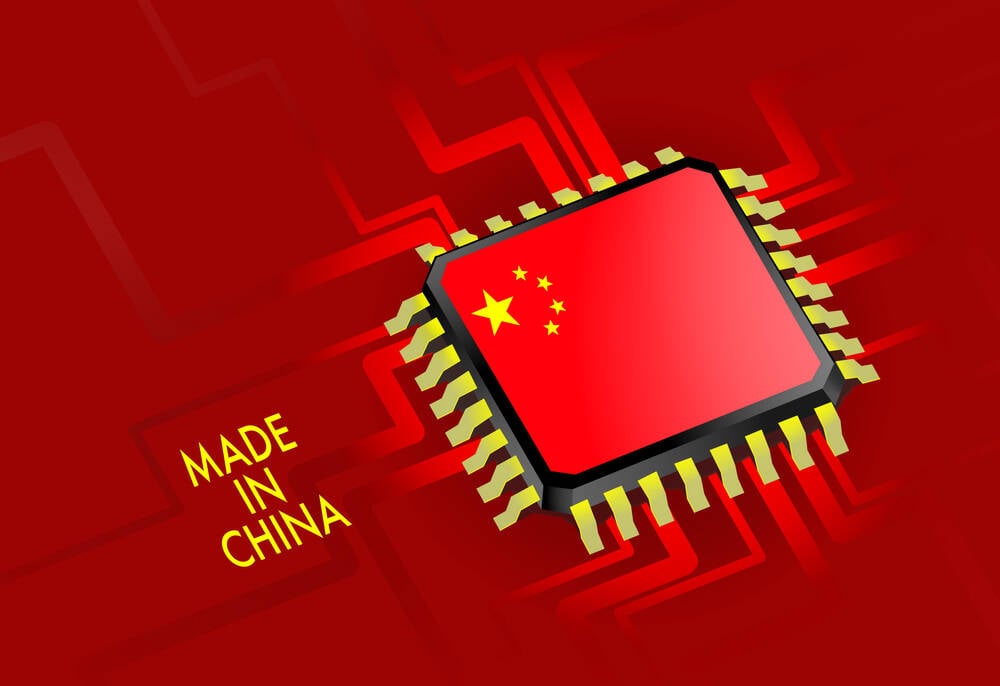Uncle Sam To Tighten Chip Export Chokehold On China... Again

The US is set to update its export restrictions on semiconductor tech to China, tightening loopholes on chipmaking tools as well as chips used in AI, according to reports. However, analysts still expect China to grow its share of the semiconductor market over the next several years.
It has been almost a year since export restrictions were imposed and the US Department of Commerce is said to have worked on refreshing the rules, as reported by Reuters, which cited an unnamed US official as its source.
The updates are expected to bring the US in line with more recent Dutch and Japanese rules to limit access to chipmaking tools such as photolithography equipment, and close some loopholes in export restrictions on chips used for accelerating AI processing.
Washington has already given China early warning of the coming changes to the restrictions, Reuters claimed, in an attempt to avoid souring relations with Beijing as much as possible.
The restrictions on chipmaking equipment by the Dutch government extended the controls on exporting extreme ultraviolet light (EUV) systems to requiring export licenses for some of the less-advanced DUV lithography systems as well.
These may put a curb on any further advances in China's semiconductor industry, according to the South China Morning Post. The outlet reports that while the country was riding high following Huawei's recent announcement of a 5G smartphone using domestically made chips, China is still years away from being able to produce 7nm silicon at scale.
Not a single chipmaking production line in China has been equipped with a Chinese-made lithography system, according to SCMP. Most domestically produced systems are used only in academic research.
But a new report from IDC on the geopolitical impact on semiconductor supply chains forecasts that China will still continue to grow its share of the market despite these challenges, reaching 29 percent in 2027, which equates to a two percent increase over current levels.
This modest increase will likely be driven by the use of more mature production nodes, however, as IDC reckons that China's share of advanced node production – 7nm and below – will be just 1-2 percent.
In the same timeframe, Taiwan's market share is expected to fall, offset by an increase in the US share of semiconductor production at 7nm and below to about 11 percent in 2027.
- China suggests America 'carefully consider' those chip investment bans
- Uncle Sam is this keen to keep US CHIPS funds out of China
- So what if China has 7nm chips now, there's no Huawei it can make them 'at scale'
- Washington left with chip on shoulder after Huawei exposes export loophole lapses
IDC also notes that semiconductor companies have begun to shift their attention from China to invest more in Southeast Asia, with countries such as Malaysia and Vietnam set to play an increasingly important role in the semiconductor assembly and test market.
South Korea's Hana Micron announced plans this week to invest $1 billion into chip production in Vietnam by 2025, for example, while the US State Department said in September that it was working with the Vietnamese government on a partnership to create a more resilient global semiconductor value chain.
Japan is also the target of semiconductor investment, with Taiwanese chipmaking giant TSMC said to be ready to begin installing equipment at its new chip plant in Japan this month, which is set to be completed in the first quarter of 2024.
The Japanese government has already earmarked $3.5 billion worth of subsidies for the $8 billion TSMC project, which may even be ahead of schedule to start production by the end of next year.
Japan is also reported to have approved $1.3 billion in subsidies for US memory chipmaker Micron Technology's Hiroshima chip factory, said to amount to 40 percent of the cost of building it.
Meanwhile, irony meters are set to overload as a gaggle of US senators is scheduled to meet President Xi Jinping in China next week and raise the issue of Beijing's sanctions against Micron, according to Bloomberg.
The memory company's revenue fell by almost half year-on-year, according to its most recent earnings disclosure, following a ruling by China's Cyberspace Administration (CAC) earlier this year that its products posed a security risk. ®
From Chip War To Cloud War: The Next Frontier In Global Tech Competition
The global chip war, characterized by intense competition among nations and corporations for supremacy in semiconductor ... Read more
The High Stakes Of Tech Regulation: Security Risks And Market Dynamics
The influence of tech giants in the global economy continues to grow, raising crucial questions about how to balance sec... Read more
The Tyranny Of Instagram Interiors: Why It's Time To Break Free From Algorithm-Driven Aesthetics
Instagram has become a dominant force in shaping interior design trends, offering a seemingly endless stream of inspirat... Read more
The Data Crunch In AI: Strategies For Sustainability
Exploring solutions to the imminent exhaustion of internet data for AI training.As the artificial intelligence (AI) indu... Read more
Google Abandons Four-Year Effort To Remove Cookies From Chrome Browser
After four years of dedicated effort, Google has decided to abandon its plan to remove third-party cookies from its Chro... Read more
LinkedIn Embraces AI And Gamification To Drive User Engagement And Revenue
In an effort to tackle slowing revenue growth and enhance user engagement, LinkedIn is turning to artificial intelligenc... Read more

